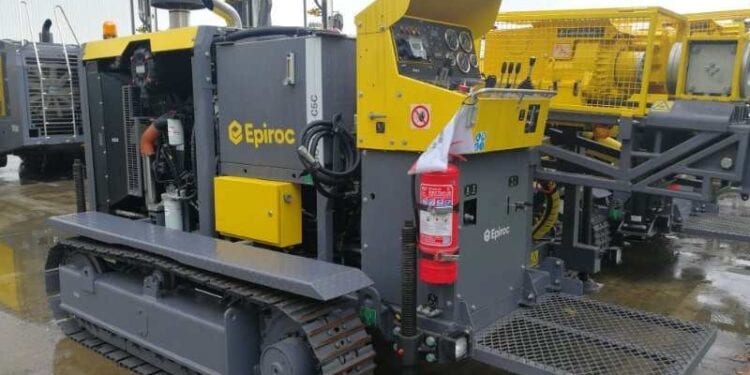Intercepts Further High-Grade Gold In Colombia
Los Cerros Limited’s (ASX: LCL) step out drilling continues to grow the dimensions of the Tesorito South porphyry target, part of the company’s 100% owned Quinchia Project in Risaralda – Colombia.
Managing Director, Jason Stirbinskis, said the latest drilling results show the company has intercepted zones of higher-grade gold within a broad zone of near surface mineralisation.
The current phase of the Tesorito South drilling campaign is looking to extend the lateral dimensions of the known gold mineralisation.
All recent Tesorito results have remained within mineralisation and therefore the system remains open in directions tested, which continues to bode very well for the scale of the project.
Drilling at the Chuscal East porphyry target intercepted units of the targeted porphyry suite, including magmatic breccia and diorites recording a 32m wide zone of particular interest.
Tesorito
The Tesorito South drilling is part of a larger campaign focussed on expanding the lateral dimensions of modelled gold envelopes to the south and north, including higher grade sub-zones that show remarkable consistency and persistence across much of the drilling campaign.
Holes TS-DH18 and TS-DH19 were drilled fanning out to the SE and NE respectively, from the same pad as TS-DH16 and TS-DH17.
Both recent cores delivered robust results with mineralisation starting from surface and continuing until the drill crossed the Marmato Fault, leaving the porphyry system at 176.8m and ~210m respectively.
o 176.8m @ 1.02g/t Au from surface in TS-DH18 including: o 54m @ 1.61g/t Au from surface and 40m @ 1.67g/t Au from 112m
o 209m @ 1.01g/t Au from surface in TS-DH19 including:102m @ 1.33g/t Au from surface including 18.5m @ 2.03g/t Au from 56.6m
Mr Stirbinskis said that notably in holes TS-DH18 and TS-DH19 is the at-surface higher grade 1.5-2g/t gold zone interpreted to be the same higher-grade zone encountered to the west at 72m downhole in historic hols TS-DH17 (52.3m @ 2.1g/t Au from 72m which is consistent with the modelled westerly plunge of the porphyry system.
“The near surface higher grade gold intercepts of holes 18 and 19 suggest the higher-grade core of the porphyry system reaches surface to the east of this pad, an area we are currently drilling,” Mr Stirbinskis said.
“It is becoming more apparent, with every drill hole that grows the potential scale of Tesorito, that our Quinchia Gold Project has great potential to evolve into a multi-million ounce gold project, like many of its neighbours.
“We already have over 1.3Moz of JORC Resources defined2, before we consider what we may be able to delineate in the Tesorito South area and at other earlier stage prospects.”
Holes TS-DH22 and TS-DH23 tested the north-eastern and northern limits respectively, of mineralisation with both holes intercepting very broad zones of lower grade gold mineralisation with sub-zones of higher grade:
o 310m @ 0.74g/t Au from surface in TS-DH22 including: o 10m @ 1.37g/t Au from 4m and 40m @ 1.1g/t Au from 128m
o 367.95m @ 0.57g/t from surface in TS-DH23 including: o 42.7m @ 0.92g/t Au from 120m.
The higher-grade gold intersection in TS-DH22 expands Tesorito South mineralisation northeast towards Tesorito North revealing a 200+m zone of untested near surface potential between the two prospects.
Mr Stirbinskis said if further shallow gold of ~1g/t Au can be delineated in this zone, it has potential to have substantial positive outcomes for future mining economics of the Quinchia Gold Project.
The company is currently testing for eastern extensions of Tesorito South mineralisation with a series of drill holes. The intention is to then focus on the western region of Tesorito South with the likelihood of extending drill holes at depth into the region of Tesorito West.
“The company has previously announced plans for deep penetrating IP geophysics which will begin shortly. It is expected this program will provide critical additional information for drilling both the western area of the Tesorito South porphyry (Tesorito West) and Tesorito North.”
At Chuscal Holes CHDDH12 and CHDDH13 tested the Chuscal East porphyry target zone. The previously reported visual logging of CHDDH12 intersected a suite of diorite, porphyritic diorite plus a 164m wide zone of magmatic breccia interpreted to represent elements of an underlying causative porphyry partly responsible for the significant extent of the Chuscal gold in soil anomaly.
Hole CHDDH13 was sited to test ~200m below the CHDDH12 zone of interest. Whilst most of the core of both holes delivered extensive, but marginally elevated gold values, a 32m wide zone capturing a central diorite surrounded by magmatic breccia produced the following intercept in CHDDH13: 32m @ 1.64g/t Au from 404m in CHDDH13
“We remain confident that we are edging closer to the core of an underlying causative porphyry at Chuscal East and we are yet to test the Chuscal West porphyry target. The Chuscal rig is drilling at the Ceibal porphyry target currently and it is intended to return to drilling Chuscal after the completion of pending regional geophysics which should assist in targeting,” Mr Stirbinskis said.











